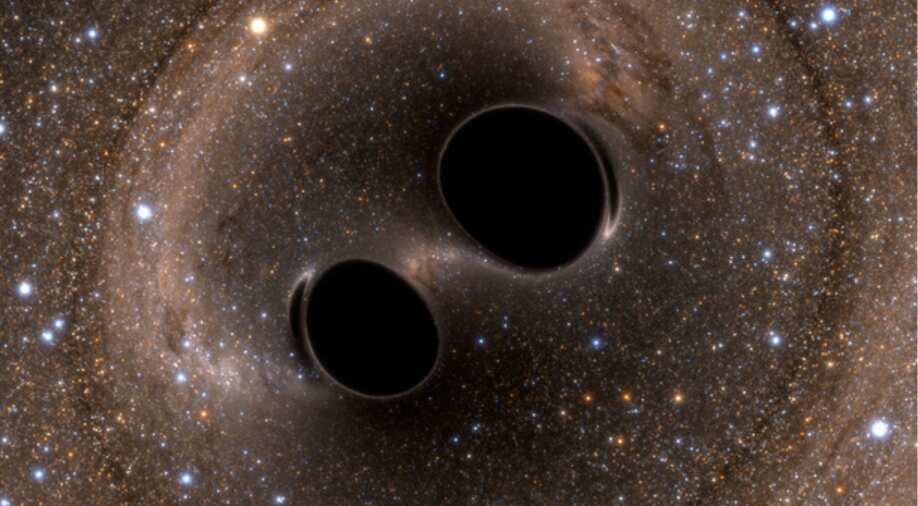In a groundbreaking discovery, astronomers have identified two pairs of supermassive black holes on the brink of merging—a cosmic event never before observed. Using NASA’s Chandra X-ray Observatory, this astronomical milestone was detected in two dwarf galaxies, providing invaluable insight into galaxy formation and evolution in the early universe.
A Glimpse Into Merging Dwarf Galaxies
The two dwarf galaxies—named Mirabilis and Elstir & Vinteuil—are located 760 million and 3.2 billion light-years from our galaxy, respectively. What’s unique is that each of these galaxies harbors not just one, but two supermassive black holes at its core, now on the verge of colliding. This remarkable event, captured by Chandra, has given astronomers an unprecedented glimpse into the cosmic dance of black holes within dwarf galaxies.
The Power of Chandra’s X-Ray Vision
Chandra’s ability to observe X-ray emissions from the black holes’ accretion disks played a pivotal role in this discovery. These X-rays form when matter spirals into a black hole, heating to extreme temperatures and creating a disk of superheated plasma. By studying these X-ray signals, astronomers can decode the energetic processes at play and gain insights into how galaxies evolve during their lifetime.
This new revelation holds promise for understanding the formation of large galaxies like our Milky Way, as these mergers between dwarf galaxies are believed to be integral in the creation of more massive galaxies over cosmic time.
Published Findings
The findings were published in The Astrophysical Journal and are available on ArXiv, offering the scientific community a closer look at this rare event. This discovery is not only monumental in the world of astrophysics but also sparks new discussions about how galaxies merge and evolve.
Dwarf Galaxies: Our Galactic Ancestors
Dwarf galaxies, which contain fewer than a billion stars, are thought to merge together to form larger, more mature galaxies. Co-author of the study, Brenna Wells, explains, “Most dwarf galaxies and black holes in the early universe have likely grown much larger now, thanks to repeated mergers. In a way, dwarf galaxies are our galactic ancestors, evolving over billions of years to produce large galaxies like our own Milky Way.”
This cosmic collision of black hole pairs in merging dwarf galaxies provides astronomers with a rare opportunity to peer back in time, offering clues about how galaxies like ours came to be.
A New Chapter in Galactic Evolution
This discovery is expected to unlock new possibilities in the quest to understand the complexities of galactic formation. Jimmy Irwin, another co-author of the study, highlighted the significance of this event: “Follow-up observations of these two systems will allow us to study crucial processes for understanding galaxies and their black holes at a young age.”
Astronomers are eager to further study these systems to learn more about the role black holes play in galactic growth, the intricacies of galaxy mergers, and the formation of supermassive black holes.
Final Thoughts
This unprecedented detection of dual black hole pairs in merging dwarf galaxies marks an exciting chapter in astrophysics. As we continue to explore these distant events, we edge closer to understanding the cosmic mechanisms that have shaped our universe, particularly the growth of galaxies and their enigmatic black holes.



